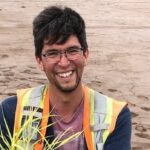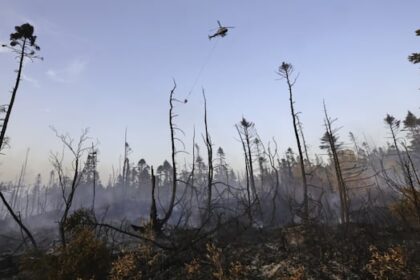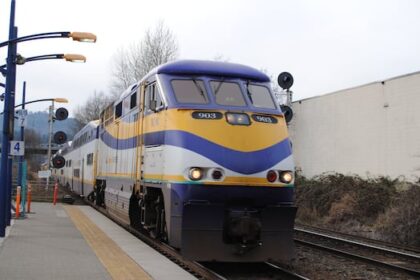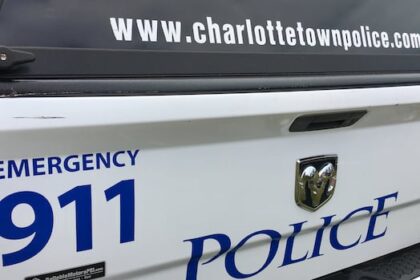Indigenous·NewShayla Chalifoux Indigenizes plant spaces by including native plants when consulting for landscape architects, municipalities, and organizations. Shayla Chalifoux sub-consults for landscape architects on incorporating native plantsEdzi’u Loverin · CBC News · Posted: Nov 14, 2025 7:00 AM EST | Last Updated: 30 minutes agoListen to this articleEstimated 4 minutesThe audio version of this article is generated by text-to-speech, a technology based on artificial intelligence.Shayla Chalifoux is the founder of Shaylish Plants, and works to Indigenize plant spaces in B.C. (Edzi’u Loverin/CBC)Autumn is often thought of to be a time of harvest, but a St’át’imc, Nêhiyaw and mixed European horticulturist in Metro Vancouver says it’s the perfect time to start some native plants.”The soil is still warm from summer and then we get all the rain so it’s a nice easy transition for the plant,” said Shayla Chalifoux, who is part of the Sekw’el’was community, also known as Cayoose Creek Band.Chalifoux is the founder of Shaylish Plants, and works to Indigenize plant spaces in B.C. by including native plants when subconsulting for landscape architects, municipalities and organizations, and through speaking engagements and workshops.Most people think of planting season as spring but Chalifoux said many native plants prefer the fall, like sweetgrass and camas bulbs.Camas bulbs are a carbohydrate food source that can be compared to a sweet potato, and are considered a traditional food source for several First Nations in B.C. (Edzi’u Loverin/CBC)Sweetgrass, used in smudging and for ceremony, grows near rivers, lake edges, and wet meadows. Often associated with the plains, Chalifoux said it’s also considered a native plant in B.C.“There’s been some stories that people thinking way back in the day the plains people came over and traded it with people, taught some of the communities down here how to grow it,” said Chalifoux.Camas bulbs are a carbohydrate food source that can be compared to a sweet potato, and are considered a traditional food source for several First Nations, including the Quw’utsun Nation and Songhees Nation.”Some ucwalmícw, peoples to St’át’imc territory, would actually go down to Washington [state] to dig these bulbs and bring them back up to eat,” said Chalifoux.Despite native plants being important for biodiversity, Chalifoux said the education is behind when it comes to using native plants in urban spaces.WATCH | How incorporating native plants benefits the land:Indigenizing B.C.’s green spaces “In the horticulturist industry I’m in, I didn’t see a lot of native plants being prioritized and definitely not a lot of Indigenous knowledge,” said Chalifoux.“A lot of people in the industry are just going for looks, and looks for humans; they’re not considering all our other relations.”B.C. tops in plant biodiversityAccording to the province of B.C., plant biodiversity in British Columbia is unmatched in Canada, with at least 2,500 native vascular plant species, in addition to thousands of lichens, mosses and fungi.Individuals can help support the land by planting native plants in pots on their balconies and gardens, said Chalifoux.“Why would you plant a native plant here? Because host nations have a relationship with that, or this specific plant is a host plant for a larva, a native butterfly, that needs to eat only this plant to survive,” said Chalifoux.“The land is hurting. One way we can help the land is by incorporating native plants.”Chalifoux said though things are changing, not many municipalities have policies to ensure a percentage of native plants are included in city landscaping.CBC Indigenous asked the City of Vancouver if it had any policies around the number of native plants required to be planted in urban planning.A City of Vancouver spokesperson said in a statement that the Vancouver Board of Parks and Recreation is working to increase native plants in urban spaces and considers a number of factors in planning, including maintenance, resilience, and canopy cover, and consults with local First Nations.”A prime example of this is the addition of Pacific yew to the Stanley Park Restoration initiative, upon receiving feedback from local First Nations,” said the statement.The city said it has also provided native plants for ecological restoration in Vancouver parks to non-profits and community groups that hold community planting events.ABOUT THE AUTHOREdzi’u Loverin is graduate of CBC’s Indigenous Pathways Program and has reported in Vancouver and Winnipeg since 2024. Edzi’u is a member of the Taku River Tlingit First Nation and a registered member of the Tahltan Nation, but is currently based in xʷməθkʷəy̓əm, Sḵwx̱wú7mesh, and səlilwətaɬ territories. You can email Edzi’u at edziu.loverin@cbc.ca with story ideas.
Friday, 14 Nov 2025
Canada – The Illusion
Search
Have an existing account?
Sign In
© 2022 Foxiz News Network. Ruby Design Company. All Rights Reserved.
You May also Like
- More News:
- history
- Standing Bear Network
- John Gonzalez
- ᐊᔭᐦᑊ ayahp — It happened
- Creation
- Beneath the Water
- Olympic gold medal
- Jim Thorpe
- type O blood
- the bringer of life
- Raven
- Wás’agi
- NoiseCat
- 'Sugarcane'
- The rivers still sing
- ᑲᓂᐸᐏᐟ ᒪᐢᑿ
- ᐅᑳᐤ okâw — We remember
- ᐊᓂᓈᐯᐃᐧᐣ aninâpêwin — Truth
- This is what it means to be human.
- Nokoma












